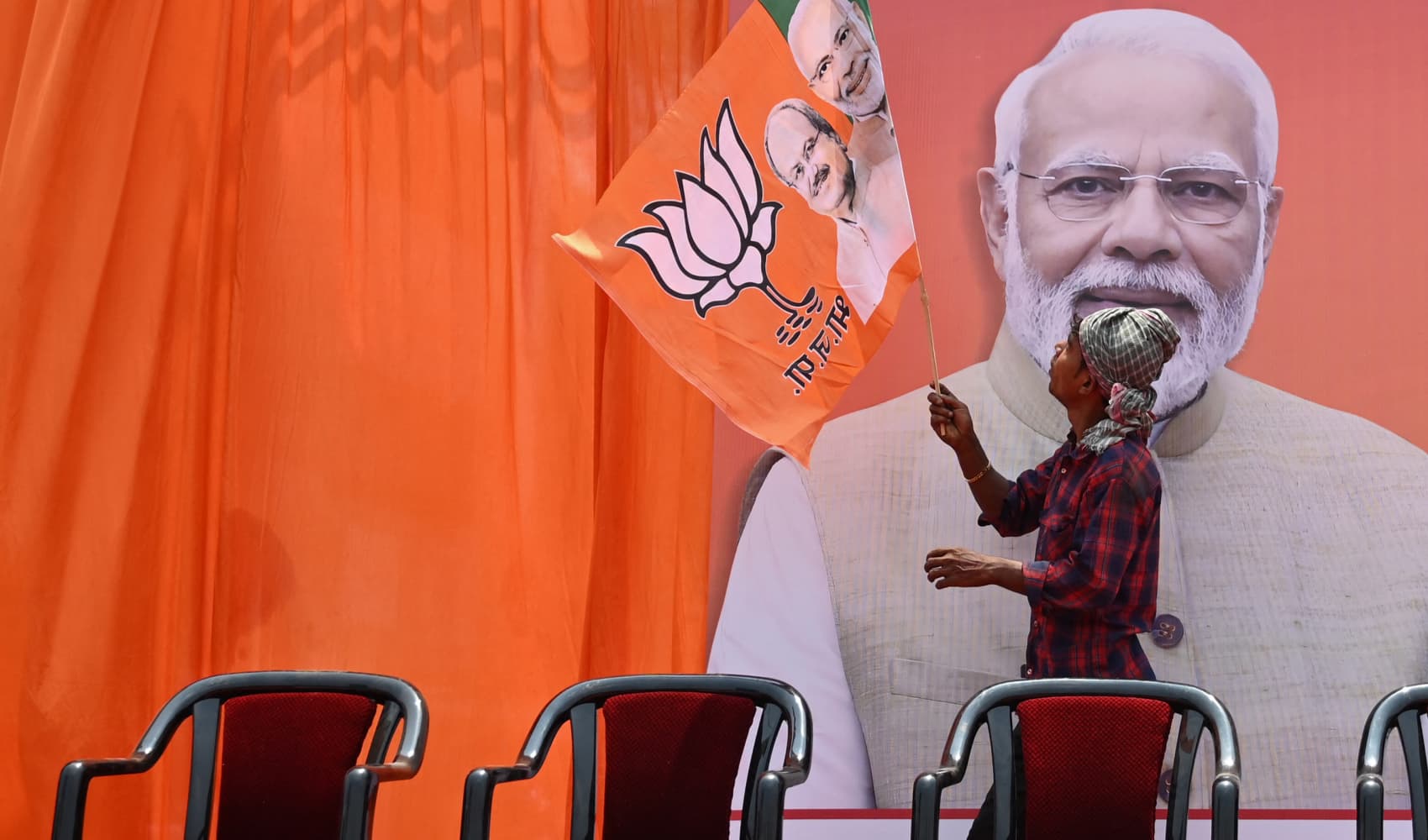
- Kroger said it will double its digital sales by the end of 2023 and boost profitability of those sales.
- CEO Rodney McMullen said supermarket operator will attract customers with fresh foods, grow its ads business as an alternate revenue stream and fulfill online grocery orders more efficiently with the help of Ocado.
- The company's shares have fallen, as Wall Street anticipates more Americans will eat at restaurants more as they get Covid-19 vaccines.
- Investors are also concerned about the challenging economics of online sales, too.

Kroger said Wednesday that it aims to double its digital sales by the end of 2023, as it races to keep up with grocery shoppers who have gotten used to stocking their fridges online during the pandemic.
At a virtual investor conference, the supermarket operator shared its strategy to turn those rising e-commerce sales into a more profitable business. Kroger CEO Rodney McMullen said the company will attract customers with fresh foods, grow its ads business to drive an alternate stream of revenue and fulfill online grocery orders more efficiently with the help of large, automated hubs operated with United Kingdom-based logistics technology company Ocado.
Feeling out of the loop? We'll catch you up on the Chicago news you need to know. Sign up for the weekly Chicago Catch-Up newsletter here.
Kroger is made up of numerous grocery brands including Harris Teeter, Ralphs and King Soopers. Its e-commerce sales soared during the global health crisis. Its digital sales grew 116% in the most recent fiscal year, which ended Jan. 30, to over $10 billion.
McMullen said the company anticipates e-commerce, cooking at home and prepared meals to go will continue to propel sales beyond the pandemic.
"It's true that the shift to spending more time at home and eating less at restaurants was a tailwind for our industry and that we will face tough comps as a result, but we also believe that those who are able to convert on this short-term boost into long-term competitive advantages will emerge as winners and that's exactly what we've been doing," he said. "As society has leapt into a new digital era, so has Kroger."
Money Report
Fading tailwinds, tough economics
Kroger's shares are up nearly 20% over the past year. However, its shares were down nearly 3% early Wednesday. They have fallen off by about 14% since touching its 52-week high of $42.99 in late January, as Wall Street expects more Americans will cook less and eat at restaurants more as they get Covid-19 vaccines.
Kroger reiterated its forecast for the year, which calls for sales at supermarkets open for at least five full quarters to decline by between 3% and 5%. However, when factoring in last year's strong pandemic gains, annual same-store sales growth will be between 9.1% and 11.1% over the two-year period.
It anticipates earnings per share for 2021 to range between $2.75 and $2.95.
The country's largest supermarket chain faces the same challenge as its grocery rivals. They must cater to shoppers' preferences, even as online sales hurt their bottom line. The grocery business has notoriously thin margins. With each online order, companies must take on the additional expense of picking items and preparing the bagged purchases — and in some cases, driving them to customers' doors. That has required higher labor costs, which grocers have struggled to pass on to shoppers in a highly competitive industry.
When shoppers buy groceries at the store, sales typically have an operating margin of 2% to 4%, according to estimates by Bain & Co. That drops to an operating margin of -5% for a grocer that picks from a store and has a customer retrieve the order through click-and-collect. It drops even further to -15% if a grocer picks from a store and delivers to the customers' home.
Grocers have tried different solutions to increase cost-efficiency, from relying on third-party delivery services like Instacart staffed with contract workers to investing in pricey automation systems that cut back on the number of employees who need to retrieve items in aisles.
Like many other retailers, Kroger has also steered customers toward curbside pickup or click-and-collect options, which eliminate transportation costs.
Investing in automation, ad business
Kroger struck a deal in 2018 with Ocado to open and operate U.S. facilities to fulfill online grocery orders and bring the costs of them more line with store sales. Its first two will go live in the next few weeks.
As part of its original agreement, Kroger said it would identify up to 20 sites for the automated warehouse facilities or "sheds," in the first three years of the deal. Each shed ranges in size from 135,000 square feet and 375,000 square feet and costs between $50 million to $100 million to build.
So far, the company has 11 sheds that will go live this year and in 2022, said Gabriel Arreaga, senior vice president of supply chain and manufacturing. He said one shed is equivalent to 20 stores worth of sales, but only requires 60% of the capital and labor.
He said each shed breaks even in its third year of operations and matches the cost of the store by year four.
Over time, McMullen said the upfront investment will pay off. "At maturity, a facility actually has a higher margin than a store," he said.
Kroger said it expects capital expenditures of between $3.4 billion and $3.6 billion this year, including those put toward the facilities.
Along with digital investments, Kroger's Chief Information Officer Yael Cosset said the grocer will attract customers by doubling down on popular items and services. For example, he said it will expand its assortment of adult beverages and restaurant-style prepared meals. It will grow Home Chef, the meal kit company it acquired in 2018.
Company leaders pointed to Kroger's media and ads business, Kroger Precision Marketing, as a way to offset the cost of online grocery orders, too.
Cara Pratt, senior vice president of Kroger Precision Marketing, said the acceleration of online sales during the pandemic has forced consumer packaged goods companies to look for new ways to get in front of customers. She said brands crave more data about shoppers' preferences and want to make more of their advertisements "shoppable."
Other retailers, including Walmart, also aim to expand its ads business by touting their knowledge of customers' purchasing patterns and ability to personalize offers.






